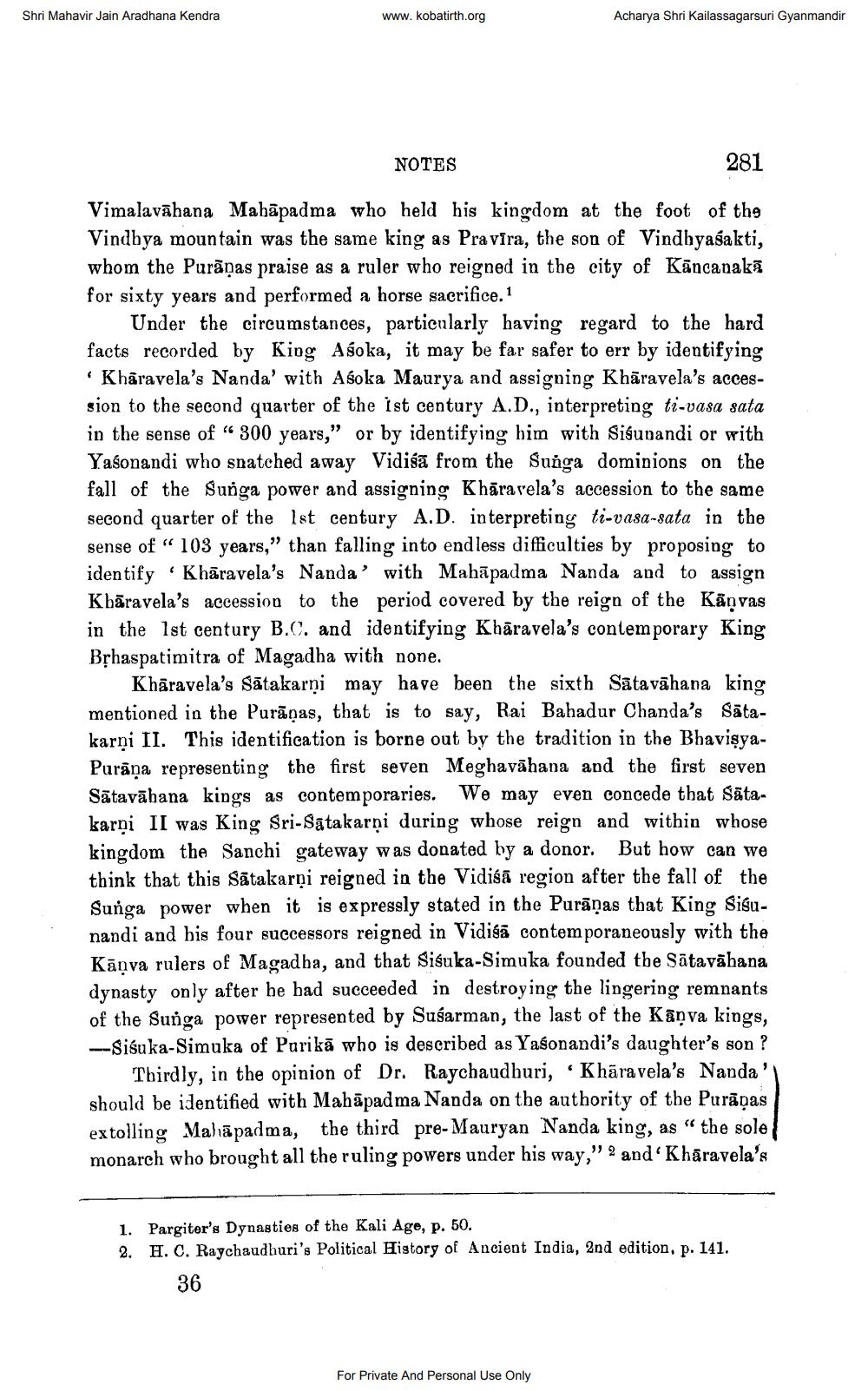________________
Shri Mahavir Jain Aradhana Kendra
www.kobatirth.org
Acharya Shri Kailassagarsuri Gyanmandir
NOTES
281 Vimalavāhana Mahāpadma who held his kingdom at the foot of the Vindbya mountain was the same king as Pra vīra, the son of Vindhyasakti, whom the Purāņas praise as a ruler who reigned in the city of Kāncanaka for sixty years and performed a horse sacrifice. 1
Under the circumstances, particularly having regard to the hard facts recorded by King Asoka, it may be far safer to err by identifying • Khâravela's Nanda' with Asoka Maurya and assigning Khāravela's accession to the second quarter of the ist century A.D., interpreting ti-vasa sata in the sense of " 300 years," or by identifying him with Siśunandi or with Yaśonandi who snatched away Vidišā from the Sunga dominions on the fall of the Sunga power and assigning Khāra rela's accession to the same second quarter of the 1st century A.D. interpreting ti-vasa-sata in the sense of “103 years," than falling into endless difficulties by proposing to identify Khāravela's Nanda' with Mahāpadma Nanda and to assign Kbāravela's accession to the period covered by the reign of the Kāņvas in the 1st century B.C. and identifying Khāravela's contemporary King Bphaspatimitra of Magadha with none.
Khāravela's Sātakarni may have been the sixth Satavāhana king mentioned in the Purānas, that is to say, Rai Bahadur Chanda's Sātakarni II. This identification is borne out by the tradition in the BhavisyaPurana representing the first seven Meghavāhana and the first seven Sātavāhana kings as contemporaries. We may even concede that Sāta. karņi II was King Sri-Satakarņi during whose reign and within whose kingdom the Sanchi gateway was donated by a donor. But how can we think that this Sātakarņi reigned in the Vidiśā region after the fall of the Sunga power when it is expressly stated in the Purāņas that King Sisunandi and his four successors reigned in Vidiśā contemporaneously with the Kānva rulers of Magadba, and that Sisuka-Simuka founded the Sätavāhana dynasty only after he had succeeded in destroying the lingering remnants of the Sunga power represented by Sušarman, the last of the Kanva kings, --Siguka-Simuka of Parikā who is described as Yaśonandi's daughter's son ?
Thirdly, in the opinion of Dr. Raychaudhuri, Khāra vela's Nanda' should be identified with Mahāpadma Nanda on the authority of the Purāṇas extolling Mahāpadma, the third pre-Mauryan Nanda king, as "the sole monarch who brought all the ruling powers under his way," 2 and Khāravela's
1. Pargiter's Dynasties of the Kali Age, p. 50. 2. H. C. Raychaudhuri's Political History of Ancient India, 2nd edition, p. 141.
36
For Private And Personal Use Only




